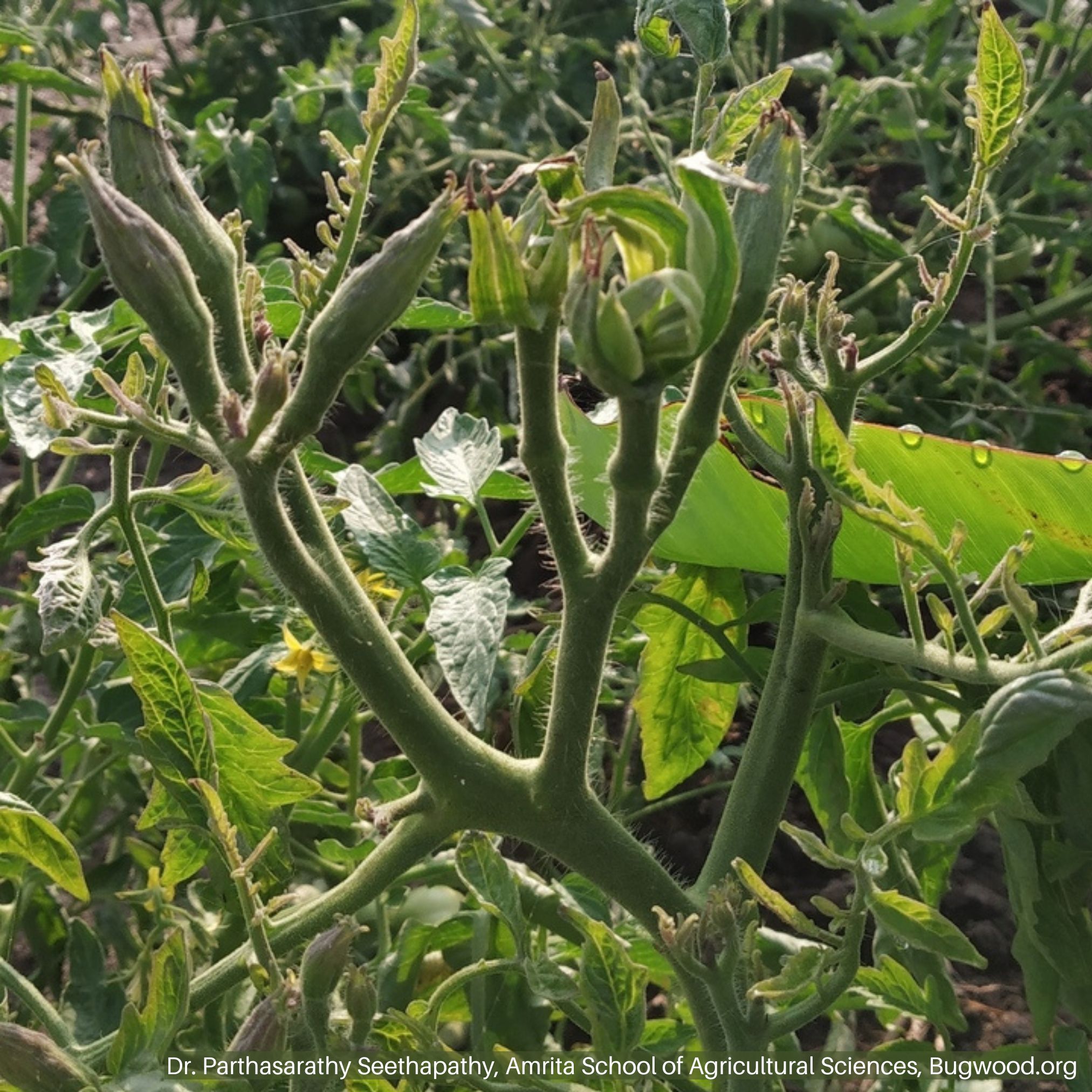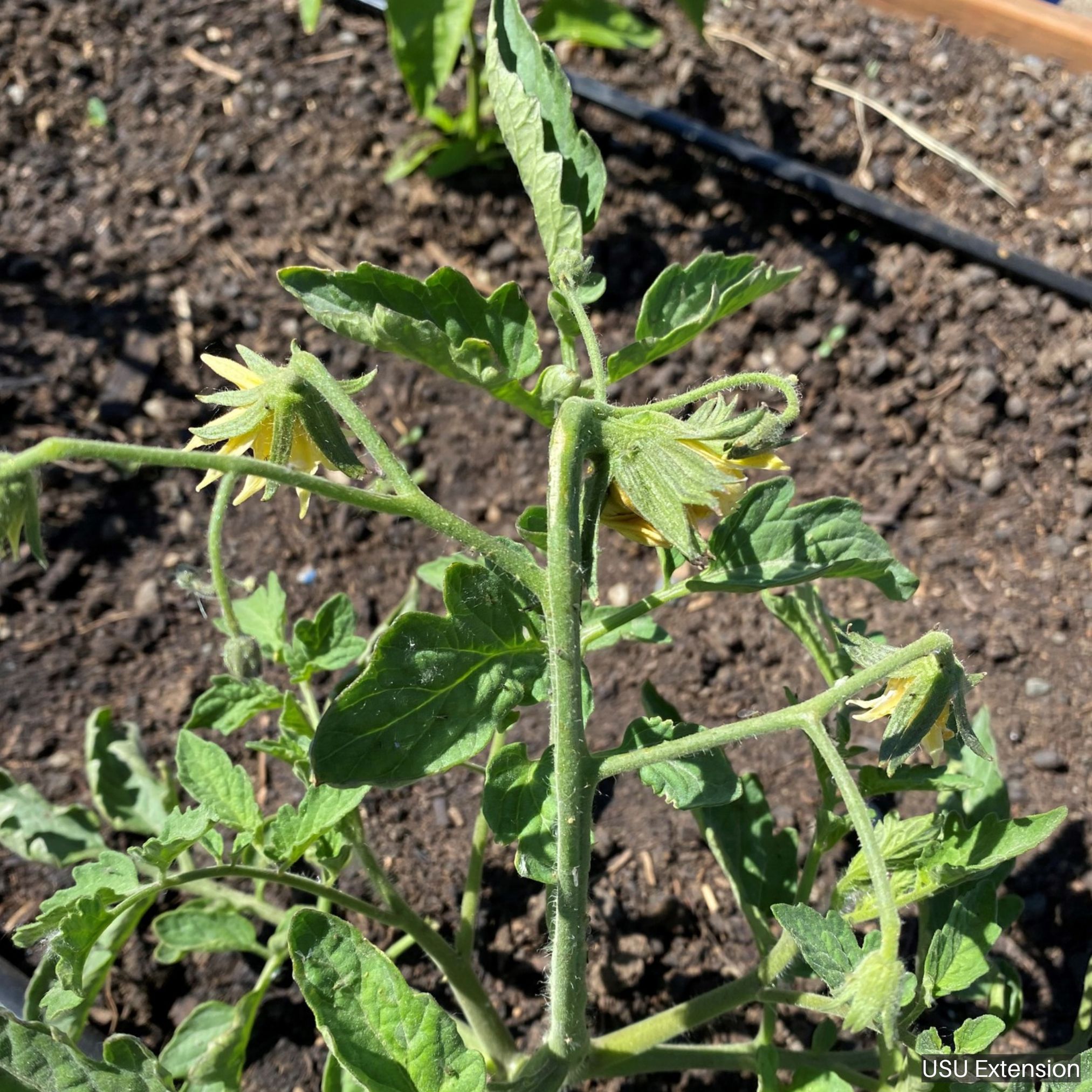Big Bud
 Beet Leafhopper
Beet Leafhopper Over-sized Buds on Tomato Plant
Over-sized Buds on Tomato Plant Abnormally Large Flower Buds
Abnormally Large Flower Buds Distorted Growth of Buds and Stems
Distorted Growth of Buds and StemsHOSTS
- Tomato
- Pepper
DESCRIPTION
Big bud is caused by a small bacterium called phytoplasma. It infects the vascular tissue of the plants and causes abnormal growth of the stems and leaves.
BIOLOGY
The big bud phytoplasma infects plant phloem, the vascular tissue that moves food throughout the plant. When a leafhopper feeds on an infected plant, it will ingest some of the phytoplasma along with the plant sap. Before the leafhopper can transmit the disease, the phytoplasma will reproduce within the leafhopper and move to its salivary glands. After the short incubation period, the leafhopper will spread the disease as it feeds for the rest of its life.
The phytoplasma can only survive within living plant tissue or within a leafhopper.
SYMPTOMS
- Swollen flower buds
- Distorted flower and leaf growth
- Short and thick apical stems
- Yellow discoloration of foliage
GENERAL MANAGEMENT
- Remove infected plants
- Remove weeds around gardens and fields that can harbor the disease and play host to leafhoppers
Precautionary Statement: Utah State University and its employees are not responsible for the use, misuse, or damage caused by application or misapplication of products or information mentioned in this document. All pesticides are labeled with ingredients, instructions, and risks, and not all are registered for edible crops. “Restricted use” pesticides may only be applied by a licensed applicator. The pesticide applicator is legally responsible for proper use. USU makes no endorsement of the products listed in this publication.

